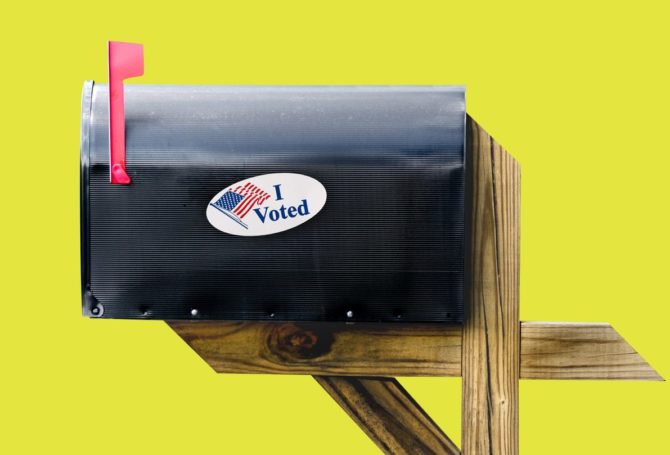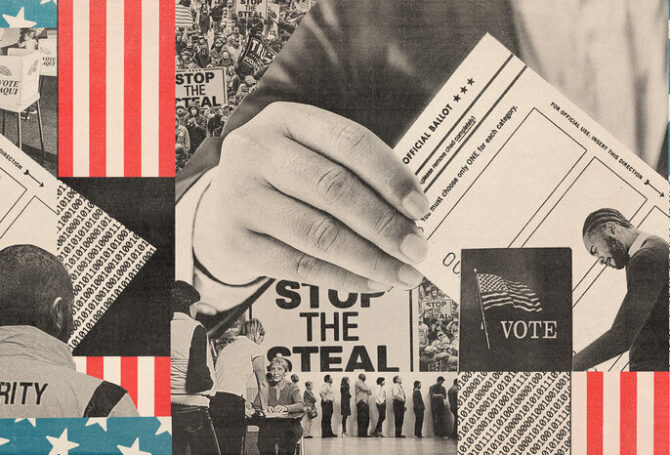
In June in Georgia, primary election voters waited hours in line because a new $104 million electronic voting system failed to work properly. In March in Texas, primary election voters waited hours in line because voting machines malfunctioned, delaying the opening of polls. In Wisconsin, so many poll workers refused to brave the COVID-19 pandemic, election officials were forced to close voting stations, resulting in long lines at the few polling sites that were open.
And yet, all we hear in national presidential chatter are doomsday predictions about vote-by-mail and even the threat of a presidential executive order to block vote-by-mail elections.
For most Oregonians, this seems bizarre in light of 20 years of universal vote-by-mail elections that have boosted voter participation, saved money and created convenience for voters or all ages, incomes and political stripes.
“As Oregon has successfully operated our elections entirely by mail for more than 20 years, I continue to believe fully in the safety, security and integrity of our election system. In fact, our May primary broke voter participation records even though it took place in the midst of a global pandemic.”
Bev Clarno, Oregon’s secretary of state and a Republican, says, “My office has received many questions about the efficacy of voting by mail. As Oregon has successfully operated our elections entirely by mail for more than 20 years, I continue to believe fully in the safety, security and integrity of our election system. In fact, our May primary broke voter participation records even though it took place in the midst of a global pandemic.”
Clarno added, “Voter fraud remains exceedingly rare and is prosecuted to the fullest extent possible. Oregonians can have faith that our elections will continue with the same level of efficiency and integrity as they have for decades.”
Former Secretary of State Phil Keisling refers to vote-by-mail as vote-at-home. He says voters like it because they can take time to consider how to vote while sitting at their kitchen table, rather than feeling rushed standing in a voting booth. Vote-at-home lets voters pick when they vote and gives them the option of voting early, dropping a ballot in the mailbox or waiting until election day to drop off their ballots at an official drop box.
It isn’t just Oregonians who like vote-by-mail. Many states are seeing increased demand for absentee ballots, and some states have made it easier to request an absentee ballot.
Utah, a red state that normally has in-person voting, switched its June primary election to vote-by-mail because of COVID-19 exposure concerns. The result was Utah’s highest voter turnout rate in years. The turnout was remarkably high among Republican voters – 67 percent compared to 39 percent in the 2016 primary.
Kim Wyman, Washington’s secretary of state and also a Republican, defends vote-by-mail, noting it produces higher turnout than in-person voting. In an interview in May with NPR, Wyman said, “I think it became a matter of convenience. And, you know, people’s lives have really changed in the last 40 years. People work away from home. A lot of times, both people in the household work. And it’s not what voting was in the 1950s. So, the polling place model, for many people in our state, didn’t work any longer, and this was a model that we could build a security in as well as the accessibility. And our voters love it.”
As for voter fraud, Wyman said, “First and foremost, we’ve had voter ID at the time of registration since 2006 in our state, so we actually do have an ID check. And beyond that, we did a comparison in 2018 of voting history, and we found that about .004% of our voters did, it appears, try to vote fraudulently. They voted for someone else who had passed away or they voted more than once. And that was 142 people out of 3.2 million ballots cast.”
No election system is perfect. Physical ballot boxes can be stuffed. Electronic voting machines can malfunction, be hacked or be programmed to switch votes. Absentee ballots can be hijacked. Any voting system needs rigorous monitoring to detect fraud or cyber-interference.
The major bane of vote-by-mail and absentee voting is allowing ballots to count as long as they are postmarked before or on election day. Those ballots can arrive days or sometimes weeks after election day. In close races, final results can be delayed until all votes are counted, which can be frustrating and give disgruntled candidates and their partisans an excuse to question the validity of the election.
Oregon only accepts ballots until the election day deadline. Even then, it sometimes takes time to tally the votes, especially if last-minute voting is intense. Close races may not have a declared winner on election night, as was the case in the special run-off election earlier this month between Portland City Council candidates Dan Ryan and Loretta Smith.
The time it takes to count every vote, however, does not add up to voter fraud. In-person elections can have delayed results, too. Remember those ballots with hanging chads in Florida that held up the 2000 presidential election between George W. Bush and Al Gore?
Arguably, the greatest actual threat to US elections is from cyber-attacks. The Senate Intelligence Committee issued this week its final bipartisan report confirming Russian attempts to interfere with the 2016 presidential election. According to the Oregon secretary of state’s website, “In 2016, we successfully blocked attempted cyber-attacks by the Russian Government. Today, our systems are much more robust. We will continue our efforts to secure our election and other systems and implement best practices as we continue forward in this battle.”
Elections are the lifeblood of democracies. They give legitimacy to power. They aren’t instruments to hold onto power. Threats to elections should be taken seriously. They also should be objectively evaluated to determine if the threat is serious – and real.
[Illustration from The Atlantic in a story by Priscilla Southwell from the University of Oregon]



